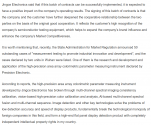i posted this interview with a Lam employee in charge of their CXMT supportASML still sells DUV to China. If lithography machine is the only bottleneck,and all other domestic equipments are up to task for 14nm,that means China already achieved non-American 14nm production line. But I'm skeptical about it,especially regarding testing equipments.
According to this person, SMSC does a lot of 7nm/14nm and they cannot obtain Lam equipment. That should tell you everything. SMSC is non-American. It would have expanded a lot faster if it had access to American tools.Q:Lam在中芯南方的support团队后面也全撤?但是中芯南方本来也拿不到Lam的设备?
A:对。中芯南方做比较多7nm、14nm。虽然中芯南方拿不到Lam的设备,但还有一小部分人在中芯南方做服务。
The biggest constraint from what I can see is ASML scanners and funding. Since they started getting NXT2050i in H2 2021 and now NXT2100i, they are probably now able to move into more complicated N+1 process now.
You do not take early deliveries of ASML scanners unless you need it in the next couple of years. SMEE scanners should be capable enough for most of their new fabs. The NXT2050i/2100i that they are buying are for expanding SMSC production. The plan was to reach 70k wpm eventually. They simply don't talk about it now, but I think it will expand beyond that. You probably just need about 30 Arfi scanners to produce maybe 20k 14 nm wpm, 50k N+1/N+2 wpm. I think they are buying more than that in quantity.

